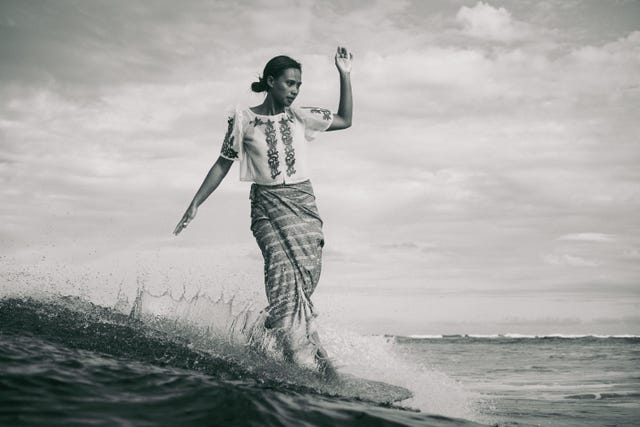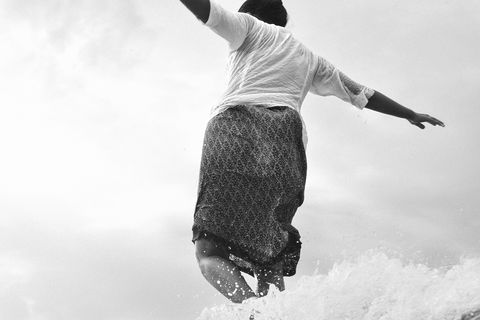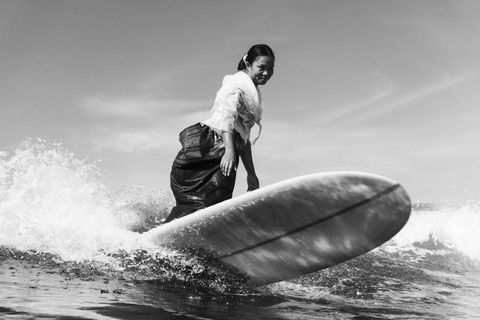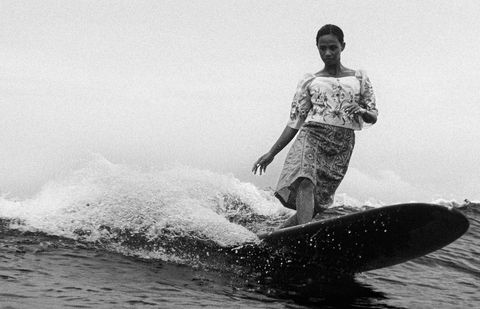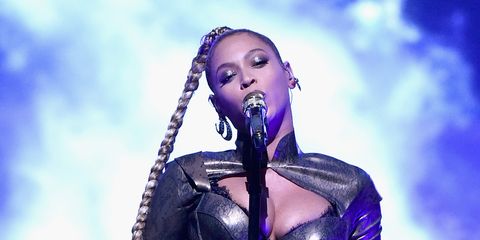Is it possible to subvert stereotypes of women in the Philippines by embracing tradition? A new photo series is certainly trying to do so.
Magnificent black-and-white portraits for Pearls, a project spearheaded by artist Archie Geotina, captures Filipina surfers in action as they calmly and jubilantly scale waves while dressed in traditional Filipiniana dresses. Debuting last year on June 12, Philippines Independence Day, Geotina released a second installment of the series on the same day this year to celebrate its anniversary.
"Living in Siargao and Mindanao shows me the importance of women in our culture," he tells BAZAAR.com. "I grew up surrounded by strong women and I always thought that they had a special place in the growth of the world and men. I figured it was time for me to create something around that concept."
Geotina, a street artist-turned-muralist who also surfs, first pitched the idea to his friends over coffee. At the time, the initial outbreak of the COVID-19 pandemic had forced the world into lockdown, temporarily halting the income of Ikit and Aping Agudo—sisters and professional competitive surfers who work as surfing instructors in Siargao. They would come to star as the original muses of Pearls.
Having surfed with them for years, Geotina says they inspired him to take up the project. "I've always loved their style and poise," he says.
The first step was to find the right Filipiniana dresses. The attire, influenced by the Spanish colonization of the Philippines, is characterized by its signature puffy butterfly sleeves, long skirts, and use of piña fabric, which are produced from the fibers of pineapple plant leaves. The modernization of the style made it difficult to track down traditionally made dresses, though they eventually sourced clothes from the brand Raffaella's.
Geotina recalled the fitting with Ikit and Aping, in which doubts about the premise of the project began to creep up. "They were looking at me like I was crazy," he says. "Ikit was like, 'You really want us to surf in this?' Aside from expensive, those things are heavy. They're about a kilo and a half—plus add water to them."
He enlisted the help of surfing photographers Bren Fuentes and Jose Mirasol ("I'm not a surf photographer per se," says Geotina. "I have too much respect for that. It's another art form.") while Geotina acted as a creative director behind-the-scenes.
The results are electric. Despite the (physical and metaphorical) weight of the clothes, Ikit and Aping cut effortlessly through the water, their fluid movements between a dramatic cloud-filled sky and lurching ocean frozen in time, both evoking and challenging colonial narratives of what it means to be Filipino.
"It's hard to do what they did," Geotina says of his friends. "It really is a testament to how good they are as surfers."
He dubbed the project Pearls, a name that conjured ideas of beauty and wisdom but that also doubled as a reference to the country's epithet as perlas ng silangan, a line from the national anthem that literally translates to "pearl of the East."
In black-and-white, there is a historical power to the photos, too, a sort of timelessness that leaves viewers unable to discern if they were shot days or decades ago. The dramatic contrast deifies and immortalizes the subjects, an effect that Geotina says was intentional.
"I'm so obsessed with '60s and '70s surf films and photography," he says, citing images by Jeff Divine of icons like Gerry Lopez and Rory Russell. "I wanted Filipinos to have that."
In the second installment of Pearls that dropped earlier this month, Geotina expanded the project to include Maricel Parajes, another Siargao local, and queer surfers Colleen Hammersmith and Sandy Coldura. He additionally looked past the shores of Siargao to recruit Indonesian surfers Flora Christin Butarbutar, Fitri Nur Latif, and Iis Trisnawati, who were shot by photographer Jenal Abidin.
"It's always been the plan to make [the project] inclusive," explains Geotina. "I didn't wanna leave anyone out."
As news of attacks targeted against Asians in the U.S. reaches Geotina in the Philippines, the meaning of Pearls has continued to evolve for him.
"I'm happy [Pearls] is not just about women, but also about Filipino culture," he says. "It bears some weight into these societal problems that we have now. I wanted to empower Asian culture because we lose so much from colonization, from Westernization. It's so rare to be able to use even our aesthetics as something that can reach the world."
Pearls is currently on view at Qube Gallery in Cebu City until July 31. Prints from the series will also be available for purchase on the Pearls website for a year.





